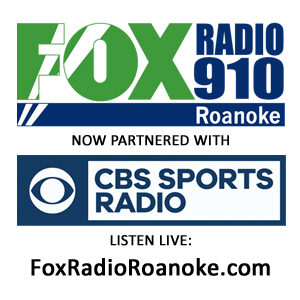Ye watchers and ye holy ones,
bright seraphs, cherubim, and thrones,
raise the glad strain, Alleluia!
Cry out, dominions, princedoms, powers,
virtues, archangels, angels’ choirs:
Alleluia! Alleluia!
Alleluia! Alleluia! Alleluia!
O higher than the cherubim,
more glorious than the seraphim,
lead their praises, Alleluia!
Thou bearer of th’ eternal Word,
most gracious, magnify the Lord.
Respond, ye souls in endless rest,
ye patriarchs and prophets blest,
Alleluia! Alleluia!
Ye holy twelve, ye martyrs strong,
all saints triumphant, raise the song.
O friends, in gladness let us sing,
supernal anthems echoing,
Alleluia! Alleluia!
To God the Father, God the Son,
and God the Spirit, Three in One.
“Ye Watchers and Holy Ones,” 1906, an appealing hymn, was written by Athelstan Riley, M.A. (1858-1945). He was born in London and educated at Eton and at Pembroke College, Oxford. He was a member of the House of Laymen of the Province of Canterbury.
In Riley’s early days, there were no telephones, jet planes, nuclear weapons, TVs, cell phones, social media, widespread anger, obesity, mortality associated with sitting and watching, or denial of the importance of faith in God.
“In the good old days,” the Bible was understood as “Basic Instruction Before Leaving Earth.”
“In the good old days,” people sat on the front porch to rest, but only after a hard day’s work.
In the good old days, “a hard day’s work” meant the “work” was physically laborious.
In the new challenging days in which we live, “a hard day’s work,” with notable exceptions, means emotionally stressful.
Fresh, unpolluted air was inspired on the porch while keen eyes purveyed the neighborhood for miscreants like me who were misbehaving. Too often, my mother learned of my misconduct before I returned home.
Front porches are gone now. “Ye Watchers” are inside absorbing disturbing TV news and anger-provoking commercials, baffled by feelings of anger and irritability, unaware of their array of causes.
My best friends tell me not to watch the news. “It is too upsetting,” but I want to stay informed. There simply are not enough good old English movies to watch over and over again.
We Sitters and Watchers and Consumer Ones
Projected for 2025 is an increase in hybrid TV content consumption. Viewers are using live broadcasts, streaming services, and short-form mobile videos at various times during the day.
Global internet users watch TV for an average of 3 hours and 13 minutes per day, including all formats.
People now spend over twice as much time online daily as they do watching TV.
Streaming makes up a large share of internet use, and more than 30% of users access online content via TVs.
In Q4 2024, NETFLIX reported more than 300 million subscribers. NETFLIX also estimated approximately 1 billion legitimate users.
American adults typically sit for 7 to 9.5 hours a day, depending on age and study.
Work, commuting, and leisure activities collectively result in extended periods of sedentary behavior, a terrible health risk factor!
We have become good at sitting.
Sedentary time is lowest in young adults and highest in older adults, with men generally reporting more sedentary time than women.
How to Reduce Sedentary Time:
Take short breaks to stand or walk every 30 minutes to an hour.
Stand while on the phone, watching TV, or during meetings.
Consider using a standing desk or placing your computer on a stand at a high counter.
Aim for at least 60 to 75 minutes of moderate physical activity per day to offset the effects of too much sitting.
I peddle a stationary bike 45 minutes daily while watching Tales of Wells Fargo and Lawman, each episode ends happily with justice preserved.
A CDC survey reports that 25% of US adults sit for more than eight hours a day, and 40% rarely exercise.
Television sets became widely popular in American homes during the 1950s. By the 1960s, 90% of homes had TV, but a January 2024 report found that only 22% of U.S. households own at least one piece of smart home gym equipment.
Cell phones became popular in homes during the late 1990s and early 2000s, with the shift from business to personal use and the introduction of more affordable and sleeker designs.
By 2002, a majority of US households had a cell phone, and this trend continued to rise, eventually leading to the widespread adoption of smartphones in the late 2000s and early 2010s.
During the 1990s, computers became more widely used in homes as prices decreased and the internet became more accessible.
Early home computers emerged in the late 1970s, but it wasn’t until the 1990s that US household ownership rose from 15% to over 50% by 1999.
Obesity rates in the U.S. rose sharply beginning in the late 1970s and early 1980s and have continued to increase for decades.
Adult obesity rates doubled and childhood obesity rates tripled from the 1960s-70s to the early 2000s, following a period of stability.
Digital games became increasingly popular in the late 1990s and early 2000s, coinciding with broader internet usage.
An increased level of widespread anger in the U.S. has been noted since the early 2000s, driven by deepening political polarization, economic anxiety, and the advent of social media.
Angry outbursts have occurred throughout American history, but this current wave is often described as a new type of anger. It is more personal, constant, and fueled by animosity toward political opponents.
Clinical depression rates significantly increased in America during two primary periods: from the mid-2000s to 2015, and again following the COVID-19 pandemic, starting around 2020.
The rise in the earlier period was most rapid among adolescents, while the more recent increase, linked to factors likesocial isolation and economic disruption, has affected young adults disproportionately and has continued.
A 2023 Gallup poll reported that 17.8% of U.S. adults were currently diagnosed with or being treated for depression, a significant increase since 2015.
Data collected between 2021 and 2023 indicates that more than 1 in 8 Americans aged 12 and older experienced depression symptoms, nearly doubling the rate from a decade prior.
The worship of God in the U.S. has changedgreatly since 1950 due to cultural, technological, and theological developments.
The 1950s sawstrong religious conformity and loyalty, but later decades were marked by more individualism, varied worship styles, and rising numbers leaving traditional faith institutions.
The music used in Protestant church services has moved far beyond traditional hymns.
Nondenominational churches have grown rapidly since the 1970s and now form the largest group within American Protestantism.
These churches often attract members from older, declining denominations by offering more flexible, less institutionalized forms of worship.
This is seen in the enthusiastic, charismatic worship styles.
Changes in the worship of God in the U.S. since 1950 have resulted in a range of effects on individuals, institutions, and society.
These effects include a decline in institutional loyalty, a shift toward personalized spirituality, and impacts on civic engagement and community cohesion.
The rise of charismatic and nondenominational worship has prioritized individual, emotional encounters with God.
Some have developed a more personal faith, while others now treat religion like a commodity, choosing services that suit them instead of sticking to one tradition.
For those who remain engaged, regular religious attendance is associated with benefits such as improved mental and physical health and higher life satisfaction.
However, the decline in church attendance corresponds with a rise in loneliness and isolation for those disconnected from such communities.
Older, established Protestant and Catholic denominations have lost members to nondenominational and charismatic churches.
However, critics argue that this structure can also lack accountability and sufficient oversight.
The reforms of Vatican II, intended to renew the church, coincided with a substantial decline in Mass attendance in historically Catholic countries.
Reforms fostered greater lay participation and local liturgy.
The perception of a changing, less “immovable” church, alongside internal debates and scandals, has been cited as a factor in declining attendance.
As fewer people attend services, the broader social fabric built around religious congregations weakens.
Churches have traditionally been hubs for community bonds, social services, and civic engagement.
A decline in church attendance is linked to lower rates of volunteering and civic participation.
Declining affiliation among white Christian groups has political implications, as this demographic has historically been a significant voting bloc.
More people without religious affiliation reflect a cultural change.
For some, this represents an embrace of secular values and a move away from religious authorities as the primary source for moral guidance.
The weakening of social cohesion and civic trust may be linked to changes in religious institutions and worship, but these are not the main reasons for rising anger in America.
It is more accurate to view religious change as one of many contributing factors within this larger context of a more polarized and angry society.
Commercialization of TV Christianity quietly slipped into a dominant position, contrary to scripture.
Appalling TV Christian commercials mislead spiritually starved audiences with warnings such as, “buying this product wins more people to Christ.” These are satanic lies dressed in religious robes.
The sermons, delivered by the most qualified theologians, are significantly shortened by these anti-Christian commercials.
The one that takes the cake is placed strategically when the audiences, some worldwide, are most concentrated on the Christian message, at the precise center of the sermon.
Yes, in the middle of a sermon, instead of the Gospel or Good News, we get the Good Product.
Some prominent ministers write a new book each week, it seems. Sadly, we hear more about the new book than the old book, the Holy Bible.
This is my concern: we have regressed into a nation of sitters whose thinking and morals are influenced by electronic devices, not by the wisdom, understanding, and unearned grace of God.
Stand up, Americans. Move your body. Like David, you are also wonderfully made. Your body is the Temple of the Holy Spirit.
All living things move. Minimal movement, ask any handicapped person or paralytic who longs to move again, how it is to live without moving.
Be cautious of religious leaders who want your money more than your salvation.
A word of caution also to those who “feel” their religion in situations and services designed to maximize feelings, but leave their enthusiasm at the exits, hardly remembering what the Lord requires of them,
“He has told you, O man, what is good; and what does the LORD require of you but to do justice, and to love kindness, and to walk humbly with your God?” Micah 6:8.

Robert S. Brown, MD, PHD a retired Psychiatrist, Col (Ret) U.S. Army Medical Corps devoted the last decade of his career to treating soldiers at Fort Lee redeploying from combat. He was a Clinical Professor of Psychiatry and Professor of Education at UVA. His renowned Mental Health course taught the value of exercise for a sound mind.

